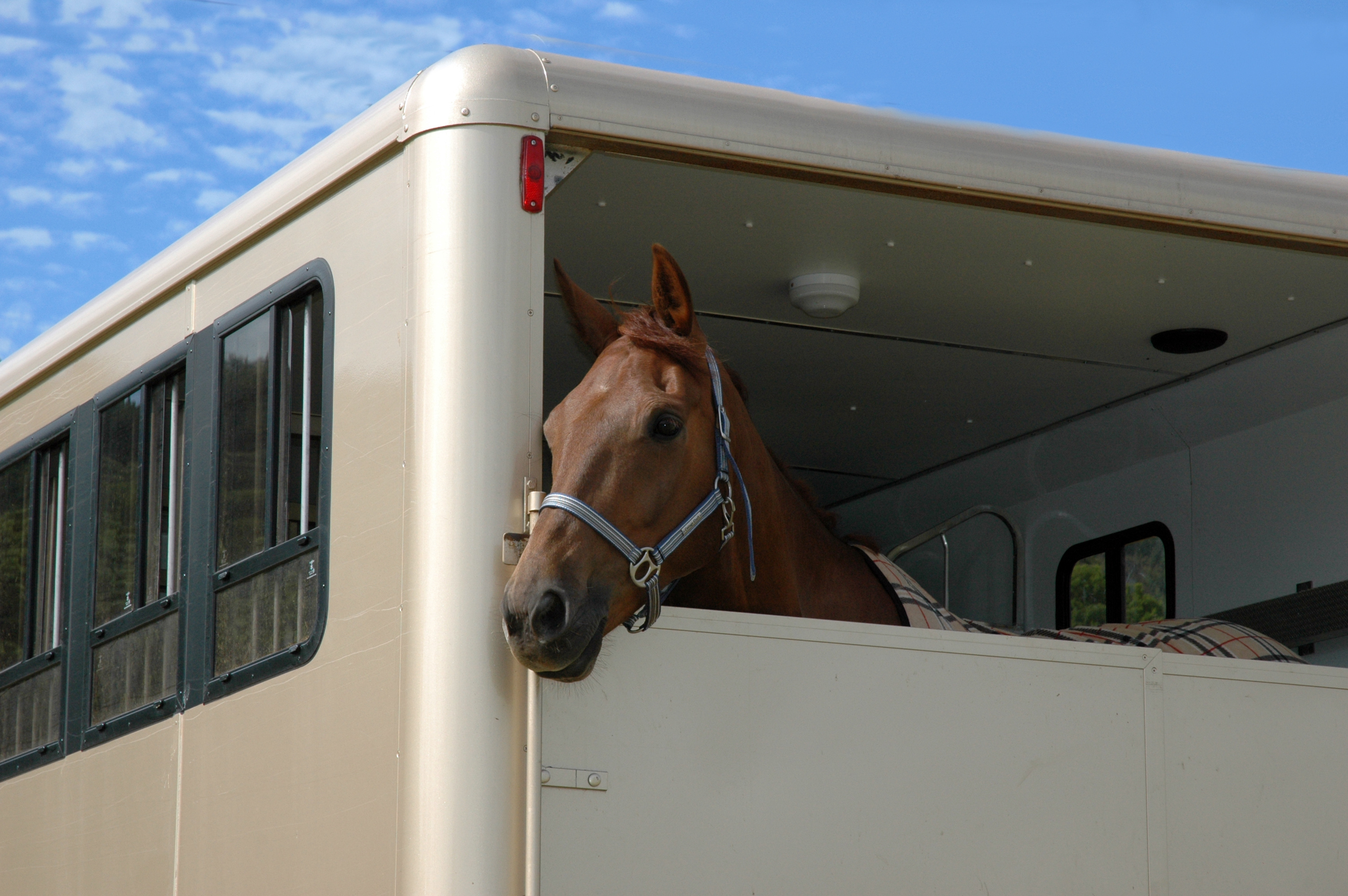Home > Horse Care > Q&A: Box Stalls Versus Slant Loads
Q&A: Box Stalls Versus Slant Loads
- February 23, 2024
- ⎯ Equus
Q: I have a question regarding horse accommodations in a trailer, specifically box stalls versus slant loads. I have the ability to trailer my horse either loose in a box stall or tied in a slant position. All of my horses have preferred riding backward when given the choice. Is there any reason not to give them the space of a box stall?
A: Traveling in box stalls is generally better for a horse’s health, but whether that is the best choice for your horse depends on his training and personality.

Horses can travel safely in trailers of many different designs, but in the United States a common vehicle used for long-term road transport of show, race and breeding horses is the commercial van with a maximum capacity of 15. During transit in a van, horses are restrained in individual stalls by cross ties clipped to each side of their halter. They usually have continual access to hay during the trip, and water is available at intermittent stops. But cross-tied horses have little opportunity for body movement, and their head and neck position is especially restricted.
Research has shown that elevating a horse’s head and neck for long time periods is stressful and can affect health. Clinical studies have identified transportation journeys of more than 500 miles in horses as a risk factor leading to infectious disease, usually involving disorders of the respiratory system such as pneumonia and pleuritis, sometimes referred to as “shipping fever.” Horses transported for 24 hours develop elevated white blood cell counts, which remain high for 24 hours after the trip is over. (During this post-transit period, horses should be housed and provided with supportive care to minimize the risk of susceptibility to infectious pathogens.)
In contrast, horses transported without cross ties have the opportunity to lower their heads all the way to the floor, which helps them to clear pathogens and dusts that can cause irritation and inflammation in the airways. This reduces the risk of shipping fever, so trailering horses in box stalls offers clear health benefits, especially during long-term transport.
Click here to learn what three things to investigate when your horse is uneasy in the trailer.
However, a horse’s behavior and previous experiences may increase his risk of injury if he is not restrained in a trailer. For example, a horse who is not calm during loading and transport may injure himself with his own flighty behavior in a small box stall. Likewise, a horse who is aggressive toward his neighbors may injure others or himself. Stall walkers and horses who exhibit other undesirable behaviors when confined also are not good candidates for traveling loose in box stalls. Horses do better in box stalls if they have training and experience in all aspects of transport, including loading easily and learning to balance on turns, stops and over bumpy roads. Additionally, the horse needs to be matched to the size of the stall so he has enough room to extend his head to the floor but not enough to engage in energetic movements.
With those restrictions and exceptions in mind, horses who are easily handled, experienced travelers and have compatible temperaments are good candidates to gain the health benefits of traveling long distances without head and neck restraint in box stalls.
Carolyn Stull, PhD
University of California–Davis
Davis, California
Don’t miss out! With the free weekly EQUUS newsletter, you’ll get the latest horse health information delivered right to your in basket! If you’re not already receiving the EQUUS newsletter, click here to sign up. It’s *free*!





